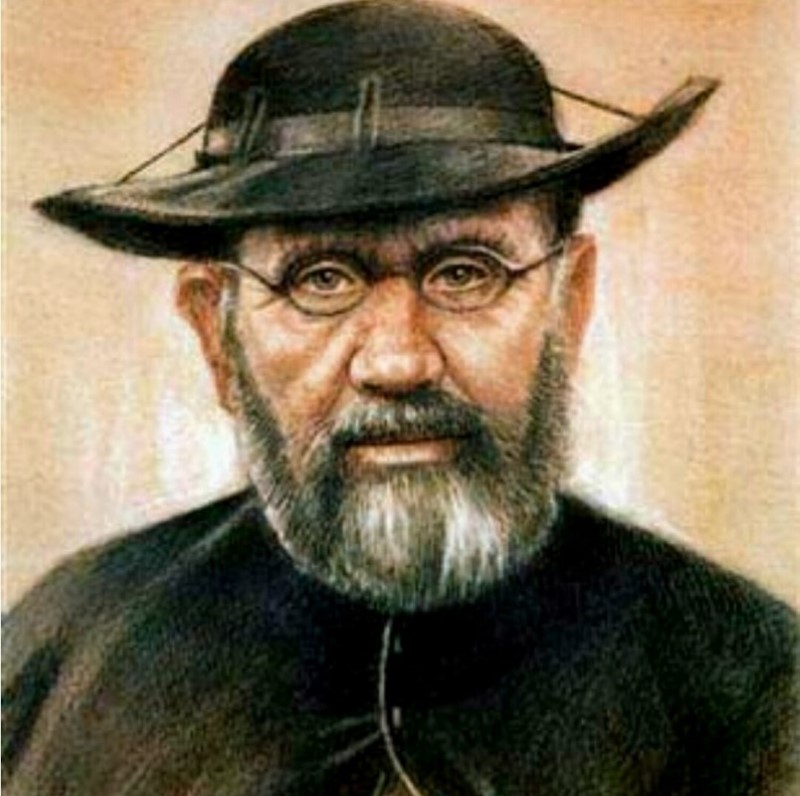We don’t always think as much about the saints as we should. I think that might change down the road. That’s because the Archbishop’s current plan under the Beacons of Light pastoral initiative is eventually to make a single parish out of the “families of parishes” (FOPs) being implemented this July. The timetable isn’t definite, but it could be as early as five years from now. If and when that happens, that means that, even if a parish has multiple “campuses” (church buildings and properties) they would not be a region of parishes working together as they are now, but a single parish. At that time, they would get a new (single parish) name even if the campuses keep the same name for their buildings. For example, the FOP to include St. Mary, St. Peter, St. Thomas More and St. Bernadette parishes might become something like “Mother Cabrini Parish” with those four campuses. The parishioners would presumably have some say in what new name to choose when the Archbishop creates the new parish.
I hope that when that happens, many parishes will choose some of the American saints who are somewhat “underrepresented” in the Archdiocese currently. Many of these American saints are immigrants to America or served in America even if they never became citizens.
We celebrated the feast day of one such “adopted” American saint last Tuesday, May 10th, St. Damien of Moloka’i. He served in the leper colony in what is now the U.S. State of Hawaii (then a Kingdom), shortly after the U.S. Civil War in the 19th century. For about 15 years, he labored among the despised and forgotten lepers, banished and quarantined to one of the Hawaiian islands, before eventually succumbing to the disease himself.
During the recent bout with the worldwide epidemic from Wuhan, many of us experienced the unpleasant reality of having to quarantine and isolate for a couple of weeks, even if we had only mild symptoms. Imagine that being permanent and having a terrible debilitating disease far worse than Covid on top of that, one that was (at the time) always deadly. Yet St. Damien humbly gave up his life to serve those who had lost hope, not only because of their illness but because they were abandoned by nearly everyone else.
One of the things that St. Damien’s biographers noted was the sheer “ordinary-ness” of St. Damien. He was not especially bright or talented at preaching and did not seem to have any particular mystical gifts. But, like so many of the saints, his holiness consisted in his outpouring of love for those that others refused to love and he would do anything for them. He even personally dug the graves of the many lepers he buried! On top of that, he was unfazed by unjust accusations (some anti-Catholics started a whisper campaign, falsely accusing him of having improper relations with the women on the island) and by the difficulty in turning back to Christ those who had taken a fatalist attitude of engaging in serious sin because they thought their lives didn’t matter. That is, they had the attitude of “eat, drink and be merry, for tomorrow we die.” It was Damien’s persistent work and prayer that eventually brought them hope and obedience to Christ through the holy sacraments. Much of this is beautifully portrayed in the movie by Ignatius Press (ignatius.com) entitled simply Damien of Moloka’i.
Here is what one of his co-workers in the leper colony wrote about the humble saint.
“There was nothing supernatural about Father Damien. He was a vigorous, forceful man with a big kindly heart in the prime of life, and a jack of all trades—carpenter, mason, baker, farmer, medico and nurse, grave digger. He was that type of man of action, of determined tenacity to attain the results of his aspiration, but of kindly disposition toward all who came into contact with him! I loved to work with him in his crusade to put down evil. There was no hypocrisy about him.”
Turning to our youth, we are very excited to be able to confer the sacrament of confirmation on all of the parishes’ junior-high and high-school aged next Sunday, May 22nd. They will be traveling downtown to the Cathedral where they will receive the sacrament from Fr. Angi, (the Archbishop’s chancellor (that is, his chief officer for Church law and procedures).
I like to emphasize that, contrary to popular belief, the sacrament of confirmation is not a coming of age ceremony or “becoming an adult in the Church” ceremony as so many make it out to be. Rather, it is the completion of the initiation of a Christian into the Body of Christ, His holy Church, which can happen at any age. (Some parts of the Church even confer this in Infancy). Once the grace is received, it is always available to those who are docile to it. That is a technical word that means “open” or “teachable.”
So the Holy Spirit floods those with grace who are receptive to using His gifts. We are currently praying a novena that our youth will be open to receiving – and using! – those gifts of the Holy Spirit. Part of that receptivity certainly involves a commitment to living the sacramental life (going to confession regularly, attending Mass each Sunday with a desire to worship the Lord and so on). But the gifts of the Holy Spirit empower the Christian to witness to Christ’s saving death and Resurrection by his words and deeds, even to the point of offering up his very life if necessary, as so many of the martyr saints have done.
